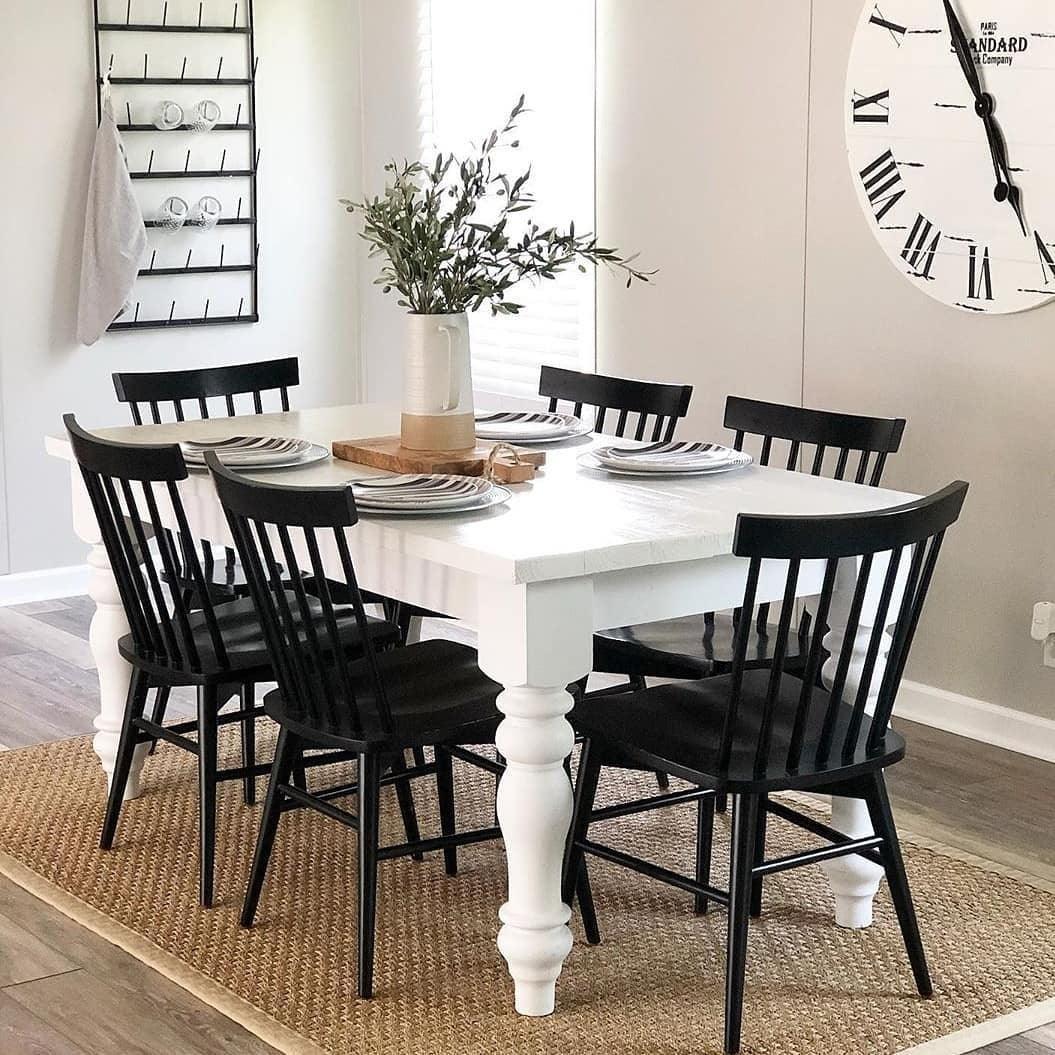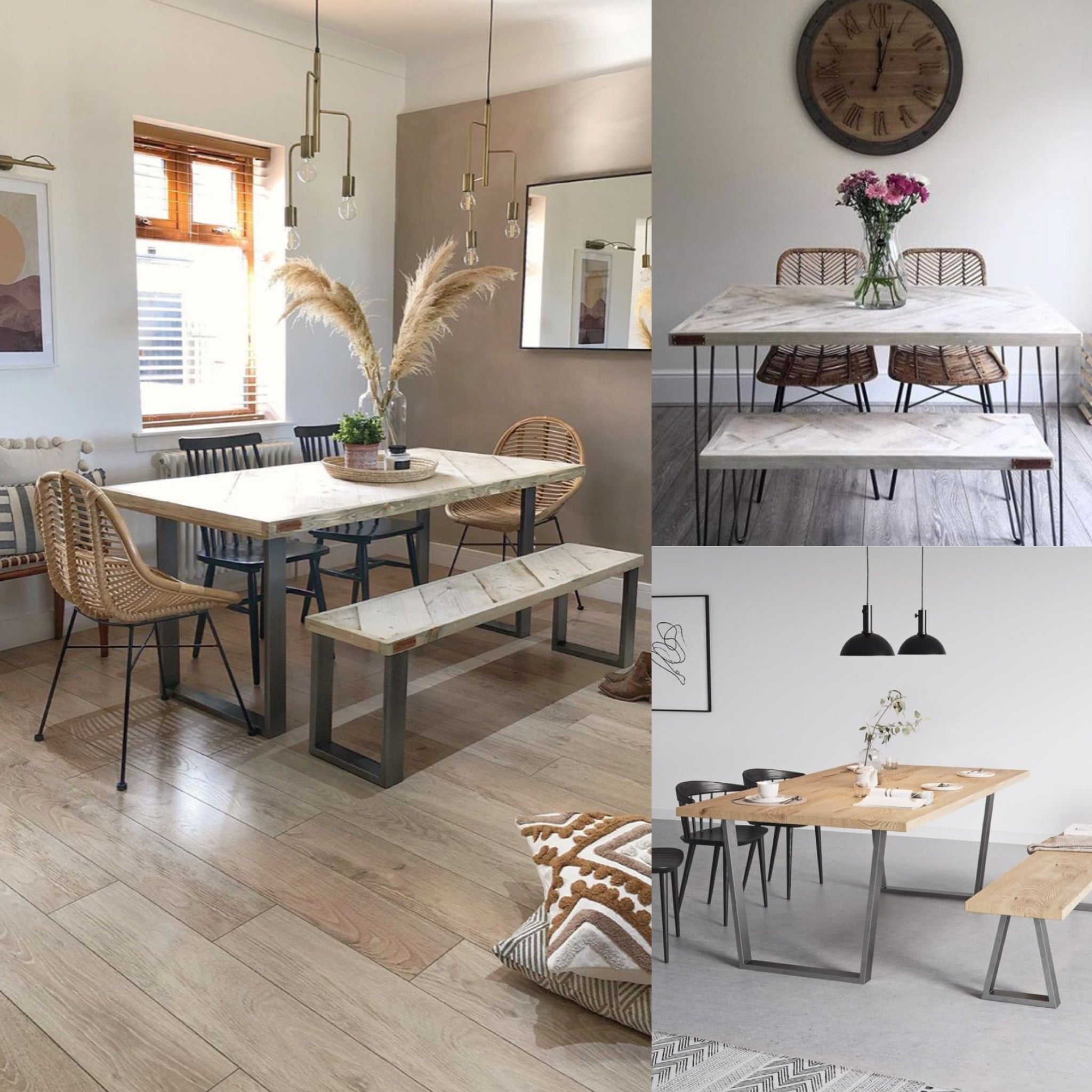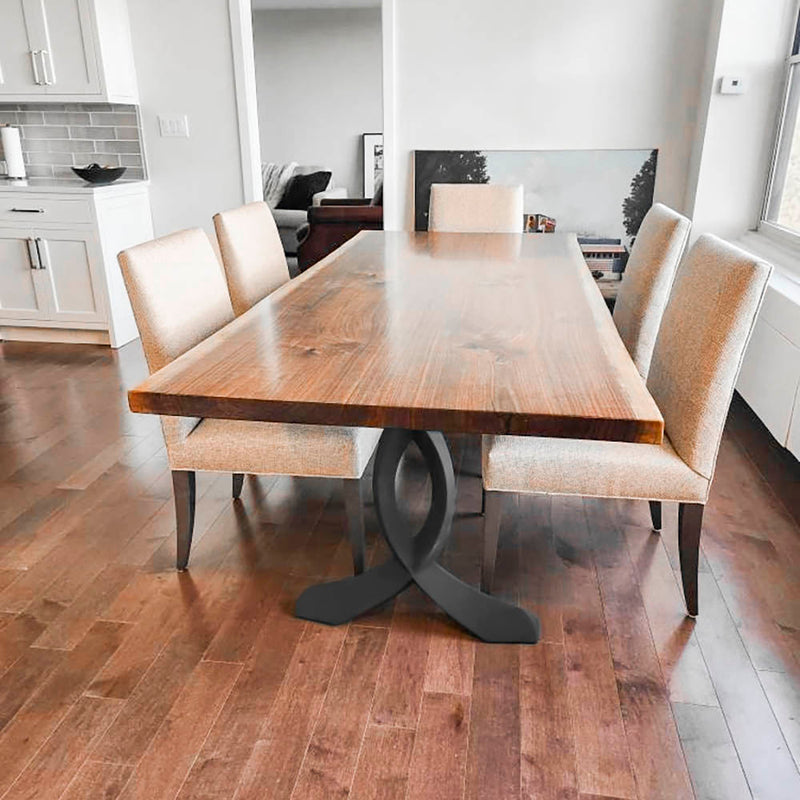Affordable and High-Quality Dining Room Table Legs for Every Budget
Affordable and High-Quality Dining Room Table Legs for Every Budget
Blog Article
Just How to Pick the Perfect Dining Room Table Legs for Your Home Décor
Picking the excellent eating area table legs is a nuanced procedure that needs cautious consideration of various elements, including your space constraints, visual choices, and functional requirements. The interplay between products, designs, and dimensions can considerably influence the setting of your eating area, making it essential to approach this choice methodically.
Assess Your Eating Area
Evaluating your dining room is crucial for selecting the right table legs that complement both aesthetic appeals and performance. Begin by measuring the measurements of your dining location, including ceiling height, flooring space, and closeness to other furniture. This details will aid figure out the proper size and elevation of your table, which straight influences the selection of table legs.
Following, think about the design and layout of your eating room. An open-concept layout may benefit from table legs that use visual lightness, such as slim steel or acrylic options. On the other hand, an extra traditional setting may ask for durable wooden legs that give a feeling of permanence.
Assess the existing color combination and materials in your dining area. Harmonizing the table legs with these elements creates a cohesive look that enhances the overall decor.
Eventually, a detailed analysis of your eating area will certainly guide you in making an informed choice, ensuring that your table legs not just boost the aesthetic charm however also serve practical objectives.
Consider Your Design Preferences
When selecting dining-room table legs, it is necessary to review your individual design preferences, as they considerably influence the total visual of your dining space. Your selection of table legs can either enhance or contrast with existing décor, making it essential to straighten them with your recommended interior design motif.
If your home leans in the direction of a modern visual, take into consideration smooth steel or minimal wooden legs that give a tidy, uncluttered appearance. For a much more conventional approach, luxuriant wooden legs with detailed makings can add a touch of style and class. Industrial styles profit from robust, resources such as recovered timber and metal mixes, showing a rugged appeal.
Additionally, farmhouse and rustic designs frequently prefer durable, beefy legs that evoke a feeling of warmth and convenience. Conversely, if your design is eclectic, you may choose unique forms or a mix of materials to develop visual rate of interest.

Evaluate Product Options
The selection of material for dining space table legs plays a crucial duty in both sturdiness and aesthetic appeal. Common materials consist of timber, steel, and composite options, each offering distinct features that can influence the general look and durability of your table.
Timber is a classic choice, recognized for its heat and versatility. Hardwoods like oak and walnut offer outstanding toughness and can be ended up in numerous discolorations to match any kind of decor. Softwoods like yearn are much more susceptible to dents and scratches, making them much less excellent for high-traffic locations.
Steel legs, commonly crafted from steel or light weight aluminum, emanate modernity and commercial appeal. They are immune and very long lasting to use, making them appropriate for families with children or constant celebrations (dining room table legs). Furthermore, metal can be finished in numerous shades, improving the customization opportunities
Composite products, such as MDF or laminate, offer affordability and varied designs. While usually less durable than strong timber or metal, they can still give an elegant appearance and are frequently very easy to preserve.
Ultimately, the product you select should straighten with your way of life, aesthetic choices, and the level of usage your dining table will certainly experience.
Determine Elevation and Size
Choosing the suitable elevation and size for your eating room table is vital for both capability and comfort. read review The basic height for dining tables normally varies from 28 to 30 inches, enabling sufficient legroom for many individuals when seated. Nevertheless, it is vital to take into consideration the dimensions of your dining room and the kinds of chairs you plan to make use of.

Moreover, consider the proportions of your dining-room. A bigger table in a spacious location can produce a grand atmosphere, while a smaller sized table works well in more intimate settings. Eventually, the ideal elevation and size will harmonize with your general decoration and improve the eating experience for you and your visitors.
Explore Modification Opportunities

Additionally, the design of the legs can be tailored to fit different styles, such as rustic, modern, or commercial. For circumstances, tapered legs can evoke a mid-century modern-day feel, while chunky, block-style legs might resonate with traditional or farmhouse style.
House owners can also discover shade finishes, from all-natural wood discolorations to repaint, enabling them to match or comparison with the tabletop and bordering design.
In addition, leg elevation can be adapted to accommodate details seating plans or individual preferences, boosting both convenience and performance.
Lastly, special embellishments, such as makings or decorative braces, can further customize the table legs, making the dining experience not just a declaration however a dish piece in the home. By taking into consideration these customization alternatives, property owners can create a dining-room table that address genuinely mirrors their individuality.
Conclusion
Choosing the suitable dining-room table legs needs careful consideration of various aspects, consisting of the measurements of the dining room, design preferences, product toughness, and preferred height. Personalization alternatives additionally improve the ability to achieve a natural visual that enhances the general design. By systematically assessing these aspects, homeowners can guarantee that the picked table legs not only meet useful requirements but also contribute positively to the eating experience and atmosphere of the home.
Picking the suitable dining space table legs is a nuanced process that needs mindful consideration of numerous aspects, including your space restrictions, aesthetic preferences, and practical requirements.Examining your dining space is essential for picking the right table legs that enhance both appearances and functionality.When determining dimension, measure the area where the table will certainly be positioned to guarantee it fits comfortably, enabling for at least 36 inches of clearance around the table for easy movement. A bigger table in a large location can develop a grand atmosphere, while a smaller sized table works well in even more learn the facts here now intimate settings.Picking the optimal dining room table legs calls for mindful consideration of various variables, consisting of the measurements of the eating space, style choices, material longevity, and preferred height.
Report this page